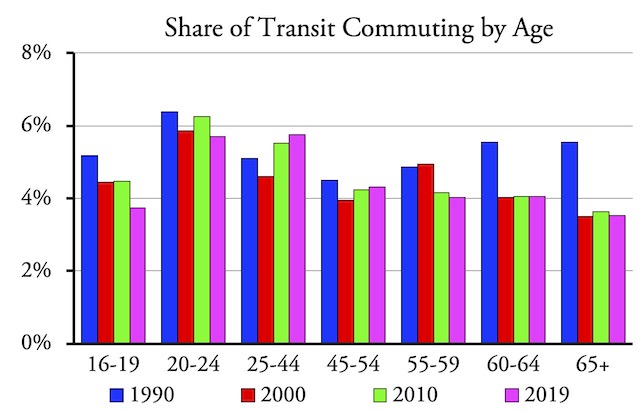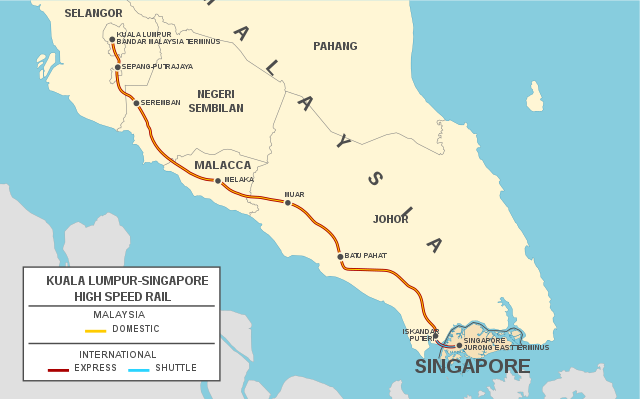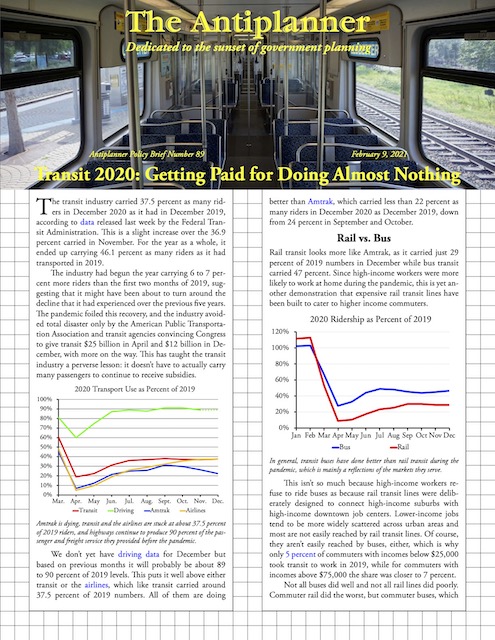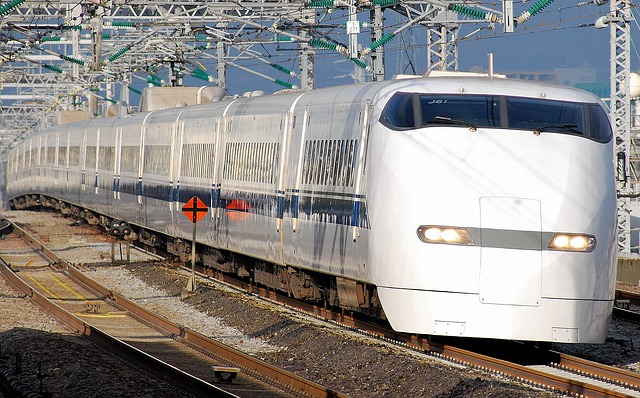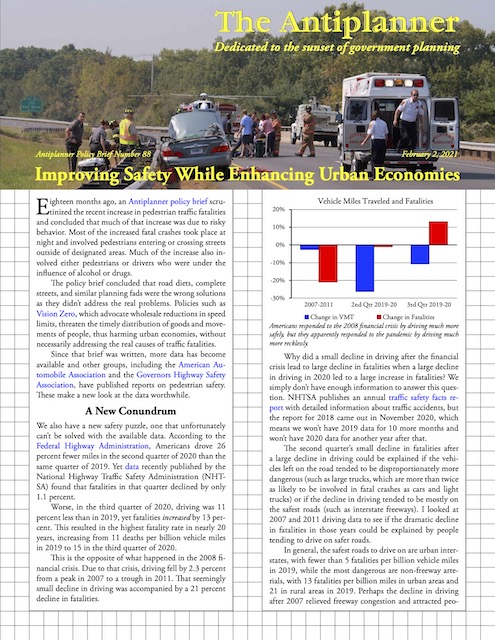“One thing Millennials are’t killing?” the headline on an article from National Public Radio read last week: “Public transportation.” Such a story might have been relevant a year or two ago. Today, when transit ridership is down by more than 60 percent, it is an example of spectacularly poor timing, like writing about how we should all invest in GameStop.
Millennials (ages 25-44) are a little more likely to commute by transit than previous generations, but members of Generation Z (ages 16-24) or less likely to do so.
One thing NPR is good at is putting a human face on the data published by various government and private entities. The problem in this story is that they forgot to see if the data actually backed up their anecdotes. They don’t. Continue reading

